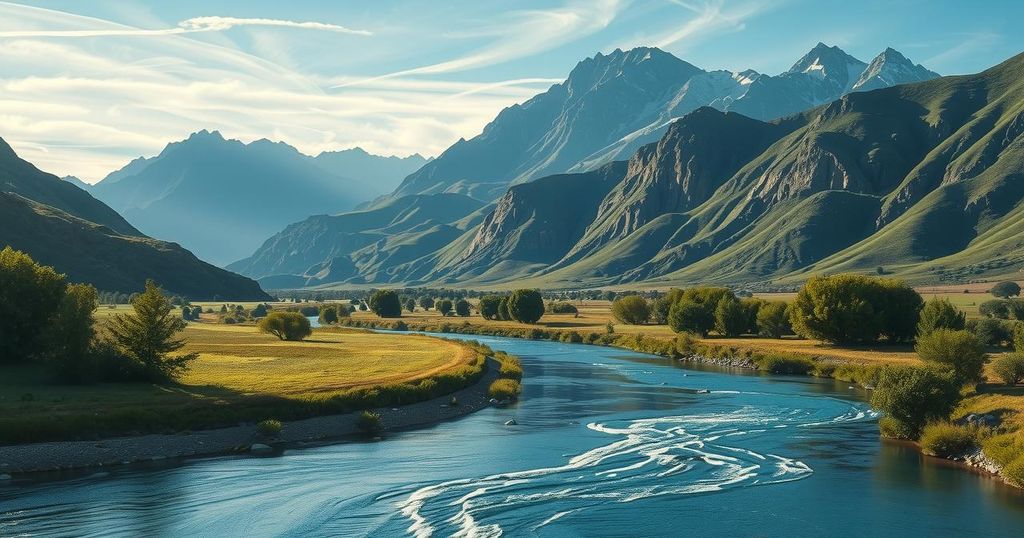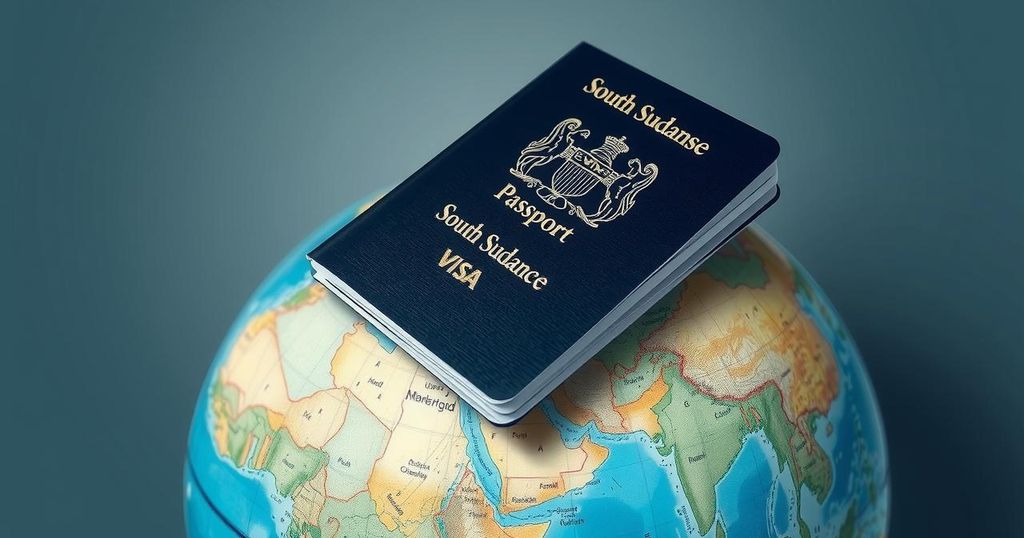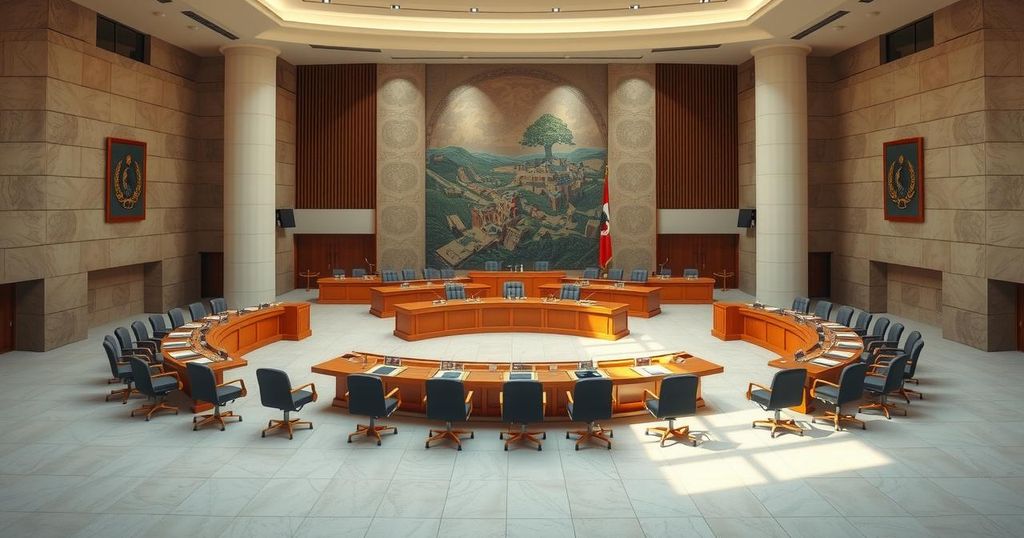Protests in Kinshasa reveal public outrage over claims that Rwanda supports M23 rebels, who have seized Goma. UN experts indicate that Rwandan military involvement is substantial, with allegations of tactical training and advanced weaponry supplied to M23. This conflict is rooted in historical grievances from the Rwandan genocide, which continue to shape regional dynamics and the humanitarian crisis in the DRC.
Protests have erupted in Kinshasa, the capital of the Democratic Republic of Congo (DRC), where demonstrators have been burning portraits of Rwandan President Paul Kagame and destroying Rwandan flags. This unrest coincides with M23 rebels gaining control over Goma, raising accusations that Rwanda is covertly supporting these armed groups, allegations that the UN has long investigated.
According to UN experts, the Rwandan army is said to have significant influence over M23 operations, with claims that rebel recruits are trained under Rwandan oversight and equipped with advanced weaponry. Goma is strategically located near the Rwandan border and has become a crucial hub for trade and humanitarian efforts, especially as its population swelled to nearly two million amidst ongoing conflict.
Recent fighting in Goma has resulted in fatalities, with reports of a chaotic landscape where communication and utilities have been disrupted. Mr. Jean-Pierre Lacroix, UN peacekeeping chief, asserted the presence of Rwandan troops in Goma supporting M23, acknowledging the challenge of determining their exact numbers amid the chaos.
Despite Kagame’s repeated denials of involvement, experts point to overwhelming evidence of Rwanda’s support for M23. Richard Moncrief, director of the International Crisis Group, noted a shift in rhetoric, suggesting that Rwanda is now justifying its actions as necessary for national defense.
Rwanda has expressed concerns that the ongoing conflict poses threats to its national security. Kagame’s rationale for intervention is rooted in historical ties to the Rwandan genocide of 1994, during which Hutu militias fled to the DRC, forming groups such as the FDLR, still active and seen as a significant threat by the Rwandan government.
Tensions have escalated as Kagame publicly criticized Congolese President Félix Tshisekedi for not sufficiently addressing the issue of FDLR and engaging with M23. Observers suggest that M23’s actions in Goma may represent a demonstration of power rather than a strategic necessity, as they already control more valuable territories.
The M23, which claims to represent the interests of the Tutsi community in the DRC, has its origins tied to complex regional tensions. Their resurgence in recent years has coincided with allegations of organized cross-border assistance from Rwanda, as the group seeks to improve its positions and revive previous stands against the Congolese state.
The operations of M23 have reportedly included sophisticated military training and support from Rwandan forces, contributing to the group’s tactical advancements. Notably, children have allegedly been involved in recruitment processes, a claim that Rwanda refutes vehemently as propaganda.
UN expert assessments indicate significant Rwandan troop presence in the DRC, with visual evidence confirming soldier activity in the contested areas. Both Rwanda and Uganda are implicated in providing military aid to M23, highlighting complex regional dynamics in the ongoing conflict.
Kagame has expressed frustration over the Congolese government’s reluctance to collaborate against mutual threats. The continued emergence of the M23 since 2021 suggests that Rwanda’s backing has grown more pronounced, with strategic objectives centered around natural resource control, particularly coltan extraction, contributing significantly to their financing.
The advanced weaponry employed by M23, including Israeli-made missiles, underscores the military capabilities bolstered by Rwandan support. As a result, M23 has made significant gains in conflict-ridden areas, which are strategically advantageous for resource monopolization as evidenced by the substantial income from coltan taxation.
Despite international scrutiny, Kagame has dismissed UN findings, labeling them misguided while emphasizing the importance of addressing the FDLR menace. Ongoing diplomatic attempts led by the East African Community to mediate the conflict have thus far found limited success, with Kagame maintaining a clear focus on FDLR as the primary concern in discussions.
The ongoing conflict in the eastern Democratic Republic of Congo, particularly in Goma, is intertwined with historical and geopolitical complexities involving Rwanda. The M23 rebel group, primarily composed of Tutsi fighters, emerged from the aftermath of the Rwandan genocide and subsequent regional conflicts. Rwanda’s involvement in Congolese affairs has been a contentious issue, with allegations that it supports M23 both militarily and logistically, aiming to counter historical Hutu militia threats. The situation is further complicated by the region’s rich mineral resources, which fuel both conflict and international interest.
The evidence of Rwandan support for M23 remains a critical aspect of the conflict in the DRC, as highlighted by various UN reports and expert analyses. While Rwanda insists on its defensive posture to address security threats, the actions of M23 and its territorial ambitions raise questions about regional stability and the humanitarian crisis unfolding in the DRC. The international community continues to monitor this volatile situation, urging collaboration to tackle complex security issues in the region.
Original Source: www.bbc.com




